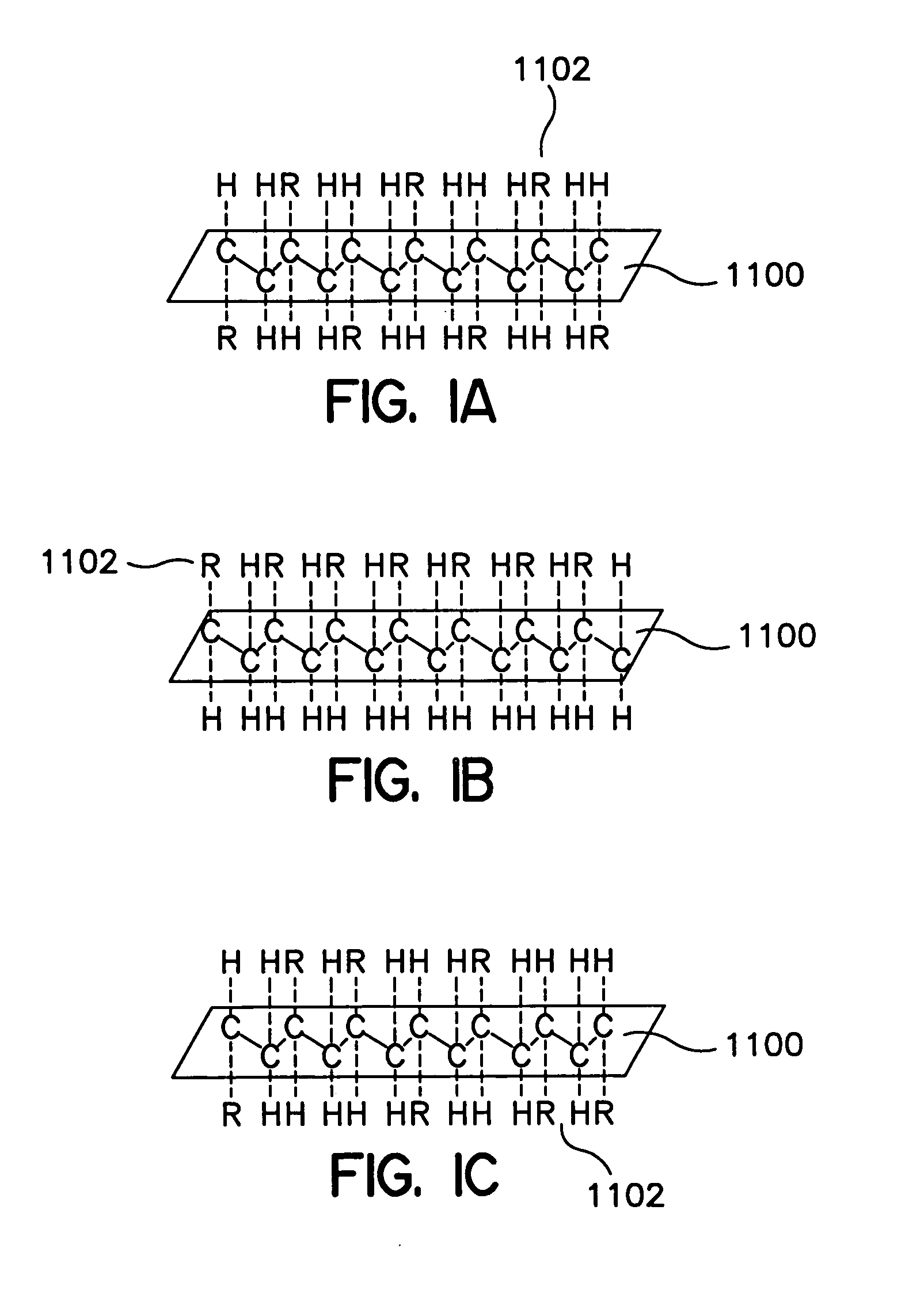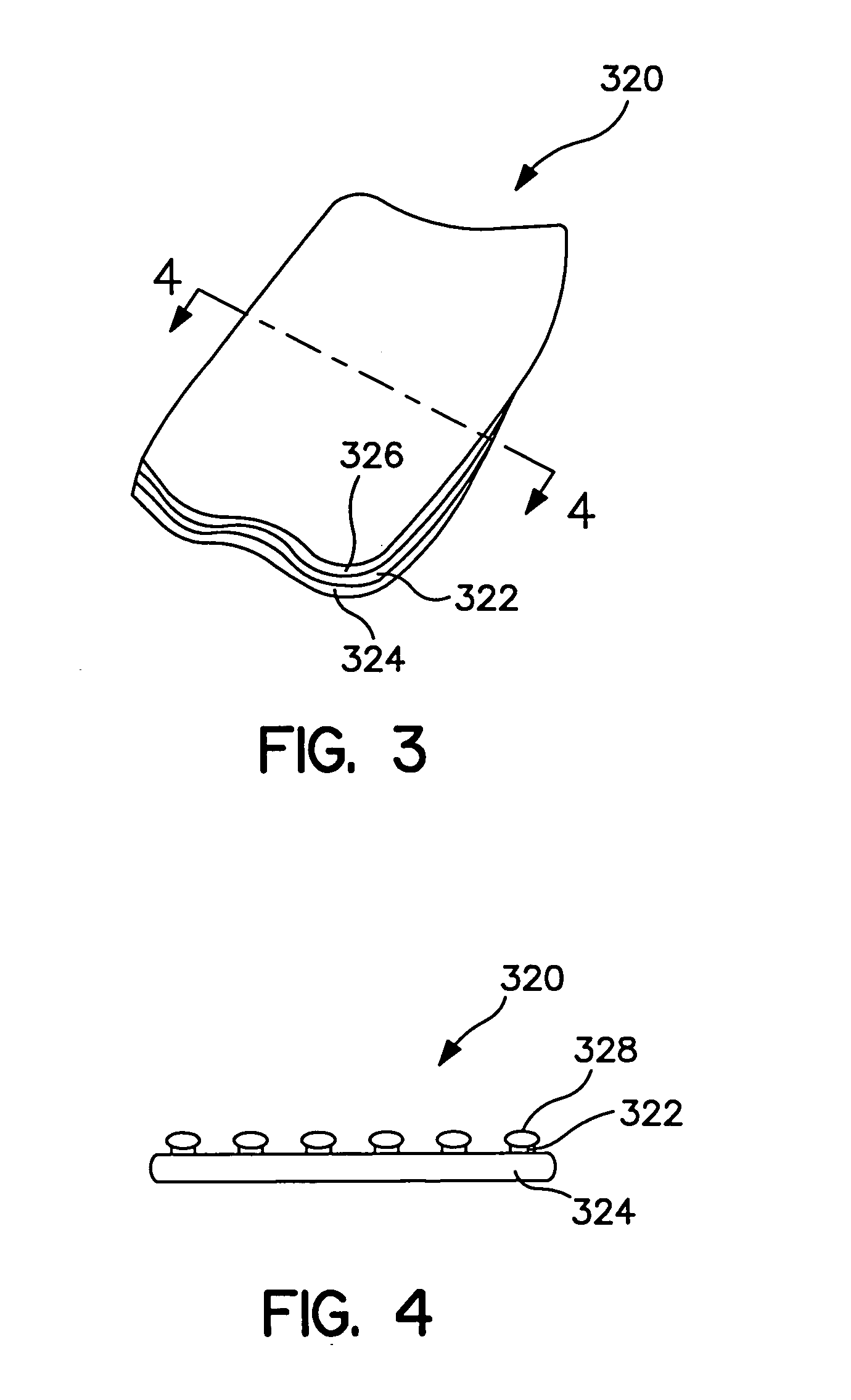Stretchable hot-melt adhesive composition with temperature resistance
- Summary
- Abstract
- Description
- Claims
- Application Information
AI Technical Summary
Benefits of technology
Problems solved by technology
Method used
Image
Examples
example 1
This example demonstrates the high stretchability and bond strength of an adhesive composition of the invention compared to commercially available adhesive compositions.
An adhesive composition (“Polypropylene Blend”) was formed from 90 wt % Eastman P1023 atactic polypropylene and 10 wt % Sunoco CP 15000P isotactic polypropylene. This composition was bonded to two facing layers to form a laminate. Each of the facing layers was a necked-bonded laminate (NBL) including 2 layers of spunbond and a layer of elastomeric film. The adhesive composition was applied to the facing layers at an add-on of 30 gsm.
Similar laminates were formed using H2525A hot-melt adhesive, available from Bostik-Findley, a business having offices in Milwaukee, Wis.; and an amorphous poly-alpha-olefin (APAO) hot-melt adhesive, comprising a poly(ethylene-co-propylene) copolymer, which is available under the designator RT2730 from Huntsman Polymer Corp., Houston, Tex.; both with the same type of facing layers as...
example 2
This example demonstrates the high bond strength of an adhesive composition of the invention compared to a commercially available adhesive composition in a simulated ear attachment configuration such as in a training pant or diaper.
An adhesive composition (“Composition 2”) was formed from 45 wt % Eastman P1023 atactic polypropylene, 22 wt % H-100R hydrocarbon tackifier, 15 wt % ESCOREZ 5690 hydrocarbon tackifier, 13 wt % Exxon PP 3746G isotactic polypropylene, 5 wt % SEPTON 002 elastomer, and 0.5 wt % Sigma 1010 antioxidant. This composition had a viscosity at 340 degrees Fahrenheit of 3900 cps, and a viscosity at 360 degrees Fahrenheit of 2700 cps.
This composition was bonded to two facing layers to form a laminate. One of the facing layers was a necked-bonded laminate (NBL) including 2 layers of spunbond and a layer of elastomeric film. The other facing layer was a hook material, namely Velcro HTH-85 having a unidirectional hook pattern and having a thickness of about 0.9 mill...
example 3
This example demonstrates the creep resistance of an adhesive composition of the invention when used to bonded elastomeric strands.
An adhesive composition (“Composition 3”) was formed from 40 wt % Eastman P1023 atactic polypropylene, 40 wt % ESCOREZ 5690 hydrocarbon tackifier, 15 wt % Exxon PP 3746G isotactic polypropylene, and 5 wt % Exxon VECTOR 584 SIS copolymer. This composition had a viscosity at 345 degrees Fahrenheit of 2800 cps.
In one sample, this composition was used to bond 940 denier LYCRA spandex strands, available from E.I. du Pont de Nemours, to 0.6 osy spunbond material. The composition was applied at an add-on level of 7.5 gsm. Initial creeping was 10-20%. After aging at 100 degrees Fahrenheit for 90 minutes, the creeping was 20-30%.
In another sample, this composition was used to bond 3000 mil-diameter KRATON G6610 elastomer strings (12 strands / inch) to a layer of 3 gsm polypropylene
PUM
| Property | Measurement | Unit |
|---|---|---|
| Temperature | aaaaa | aaaaa |
| Temperature | aaaaa | aaaaa |
| Fraction | aaaaa | aaaaa |
Abstract
Description
Claims
Application Information
 Login to View More
Login to View More - R&D
- Intellectual Property
- Life Sciences
- Materials
- Tech Scout
- Unparalleled Data Quality
- Higher Quality Content
- 60% Fewer Hallucinations
Browse by: Latest US Patents, China's latest patents, Technical Efficacy Thesaurus, Application Domain, Technology Topic, Popular Technical Reports.
© 2025 PatSnap. All rights reserved.Legal|Privacy policy|Modern Slavery Act Transparency Statement|Sitemap|About US| Contact US: help@patsnap.com



